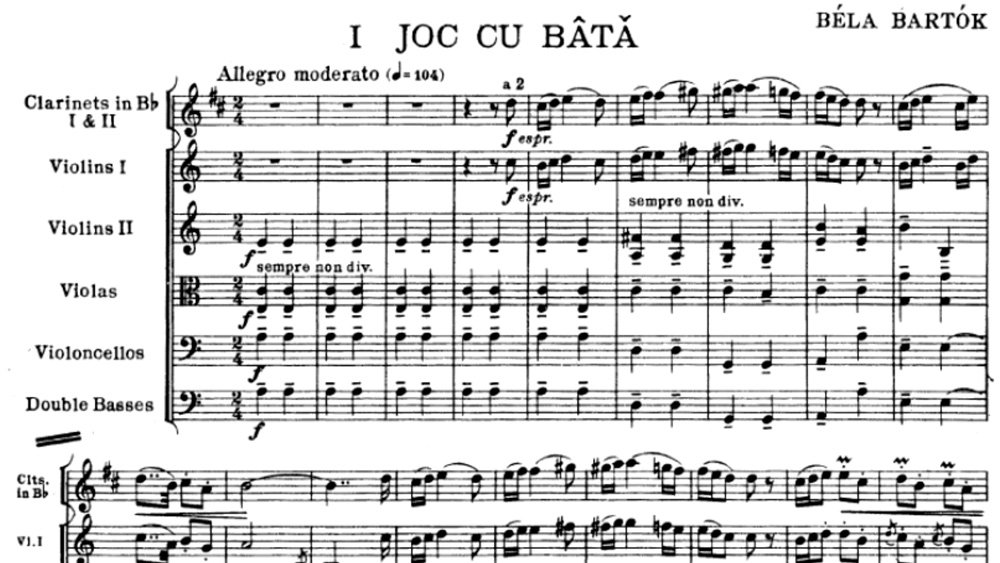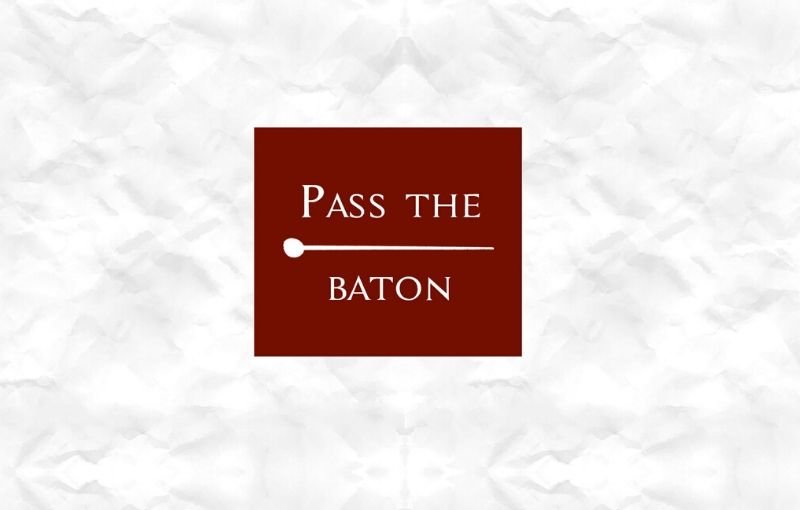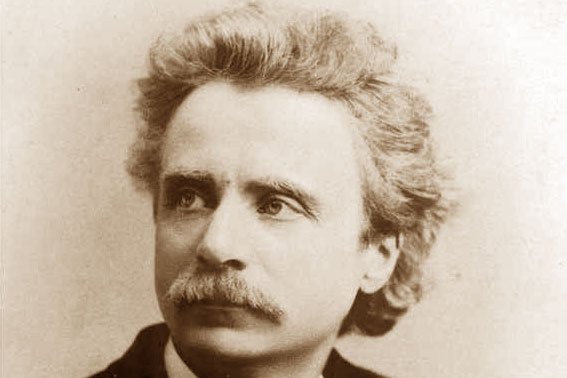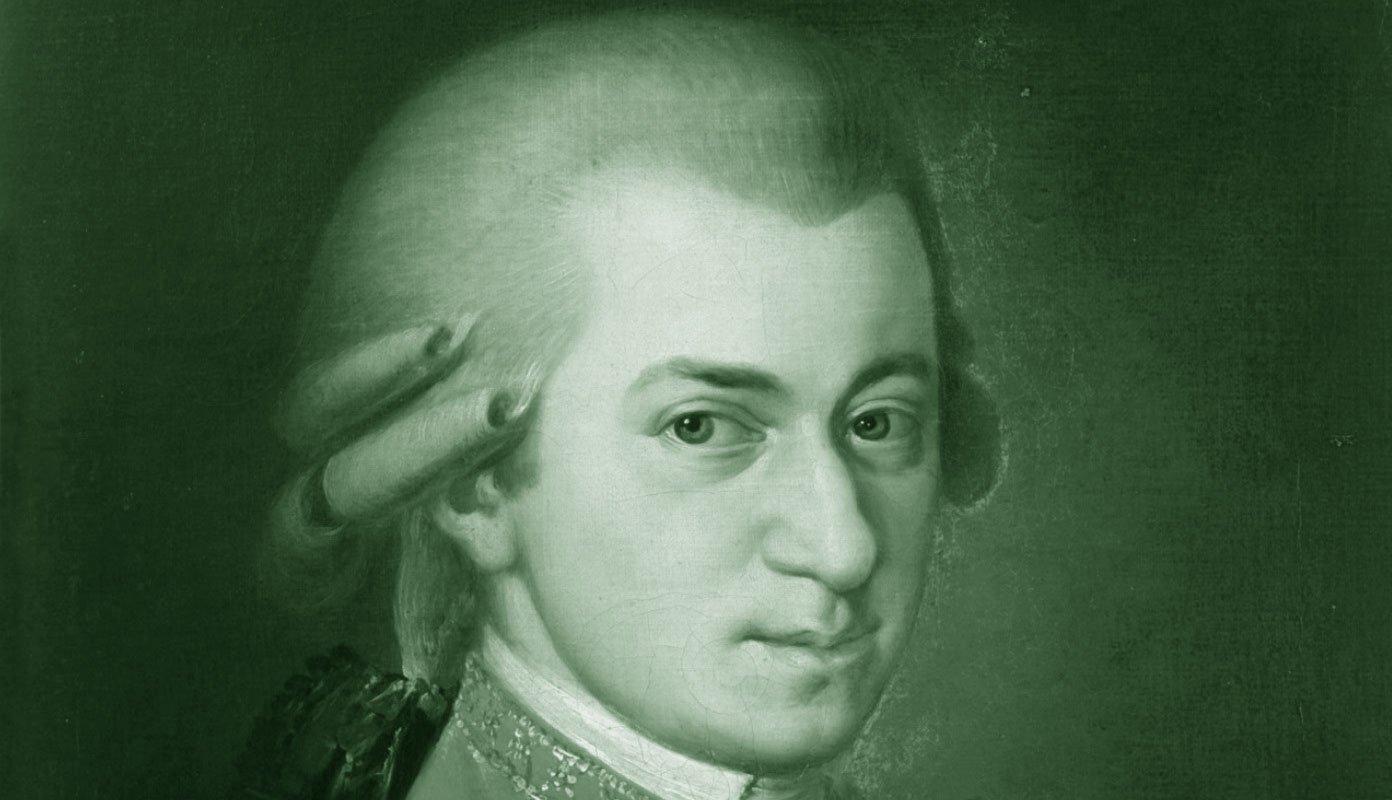Introduction
The Romanian Folk Dances is a set of 6 dances originally written for piano in 1915. Bartók himself made a version for small orchestra a couple of years later while some of his friends wrote adaptations or transcriptions for different ensembles: for example, Arthur Willner for string orchestra only and Zoltán Székely for violin and piano.
The music comes from original melodies and tunes from Transylvania which Bartók heard (and recorded) himself played on fiddle or shepherd’s flute.
Bartók had an interest in folk music for most of his life, and a lot of his works turn around it. He made extensive studies, recordings, analytical researches on the subject and was one of the founders of comparative musicology, which later became ethnomusicology.

Béla Bartók in 1927
Bartók emphasized the multi-ethnic origin of his own works in many of his lectures and letters but avoided explicit references to any nationalism. The original title of the Romanian Folk Dances included “from Hungary“: this part was eliminated by Bartók himself when Transylvania became part of Romania in 1920.
A few years later, seeing the original title on the Universal publication of Székely’s transcription, Bartók warned the editor that while such a title would please Hungarians at home, Romanians would probably take offense in the “from Hungary” reference.
The will to maintain and, actually, underline certain key aspects of folk music and their ties to different countries/people comes through in many of Bartók’s papers on the subject. And, naturally, in his compositions.
He rarely used key signatures, though the 1971 edition of these dances does have them. All dances are based on modal scales: Aeolian, Dorian, Phrygian, Lydian, even the Arabic scale is used.
Rumanian Folk Dances n.1
Stick Dance
Should you need a score you can find one here.
The melody of the first movement, according to Bartók, came from the village of Mezőszabad in Transylvania, and he first heard it when two gypsy violinists were playing it.
The second violins, violas, cellos, and basses open with a heavy rhythm representing the stomping of feet. 4 bars later 2 clarinets in unison, and the first violins come in with the melody.
The mode of this first dance – centered on the A – moves from Dorian to Aeolian with a variation on the Phrygian cadence at the end of the phrase (a variation as the Phrygian cadence – the one that from a minor scale resolves on a major chord – is usually employed on a first inversion while Bartók here uses it on the root chord).

Oops...
This content is available for free with all memberships.
Already a member? Login here.
Not a member yet? Subscribe today and get access to more than 80 videos, scores analysis, technical episodes, and exercises.
Rumanian Folk Dances n.2
Belt Dance
The second movement is a typical dance from Romania called Brâul, for which traditionally a sash or a waistband was used. This melody came from Egres, in the Banat region.
This dance centers around a D Dorian. The strings offer a pizzicato accompaniment while the clarinet takes the lead with the melody

Technical tip
The main characteristic of these dances is their freedom: this one for instance needs some push and pull to come alive. When you do study this one by yourself try to sing it in different ways. It will help you in bringing out the inner nuances of the musical line.

For a technical analysis, take a look at this other video
Rumanian Folk Dances n.3
In One Spot
The third dance comes also from Egres. The atmosphere is very static, reflecting the title. Violins and violas set the stage, sustained in the harmony by the clarinets with repeating open fifths chords in B.
B is, in fact, the key center of this third dance, evolving around the Aeolian mode with an augmented second interval, typical of the Arabic scale.
The piccolo enters a few bars later with a melody that keeps turning on itself characterized by a clear Arabian influence

Rumanian Folk Dances n.4
Dance from Bucsum
The fourth dance came from Bucsony – known also as the Dance of the mountain horn. Centered on a Phrygian A, it starts, once again, with the accompaniment by the violins, violas, and cellos. The melody comes in played by a solo violin, with a pizzicato of the double basses underneath

Rumanian Folk Dances n.5
Romanian Polka
The fifth dance is an old Romanian dance similar to the Polka and comes from Belényes near the border between Hungary and Romania.
The Lydian D mode, the tempo indication of Allegro, and the offbeat sforzati at the end of the phrase: everything contributes to create a totally different atmosphere. I wouldn’t define it as really joyful but we certainly picked up the pace.
Notice the offbeat accompaniment and the meter change moving from 2/4 to 3/4 and vice-versa for the whole duration of the dance, and the introduction of the bassoons

Rumanian Folk Dances n.6
Fast Dance
The sixth and last dance is formed by two different melodies: the first one comes from Belényes and the second one comes from the then-named Nyagra village.
Notably, the horns are introduced here. The mode is Lydian and Mixolydian on an A center. Notice the dynamics: while the clarinets and bassoons are in crescendo, the violas, cellos, and double basses are in diminuendo. The tune is carried out by the violins in octaves

Technical tip
While the first 4 dances need certain musical freedom in their approach, the last 2 are typical fast-paced folk tunes with all the offbeat accompaniments that normally come with them: technically, you need much smaller movements here, generally from your wrist. And try to emphasize the accents and the sforzato markings, which really do add a different nuance to the piece.

For a technical analysis, take a look at this other video
The second phrase is also repeated and it’s used to close the suite in fortissimo












0 Comments